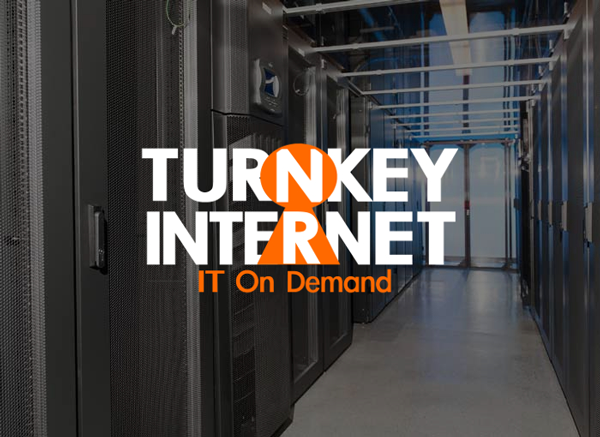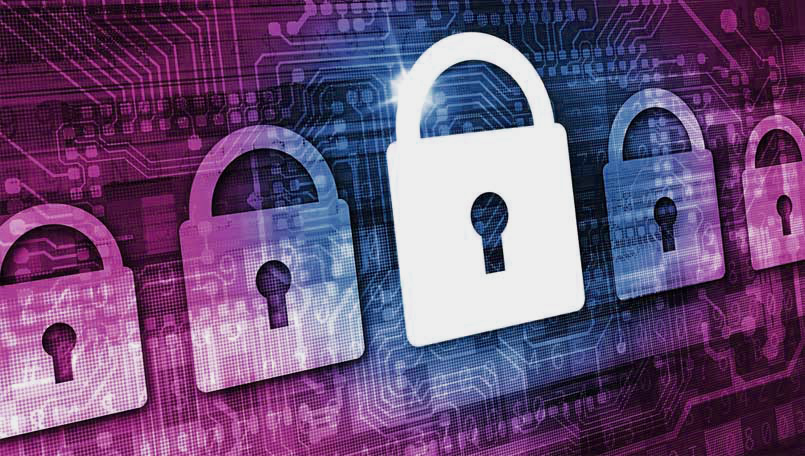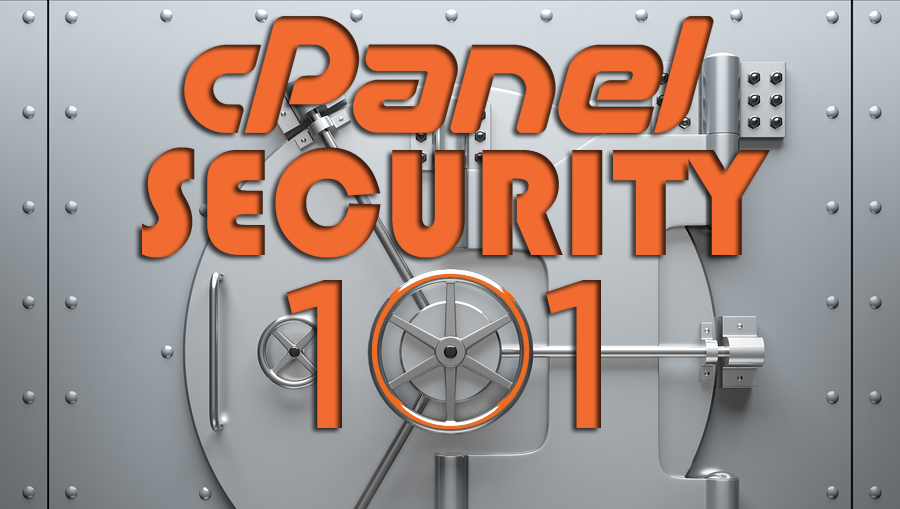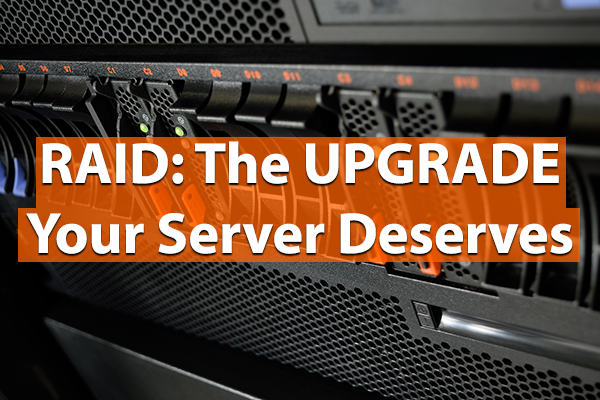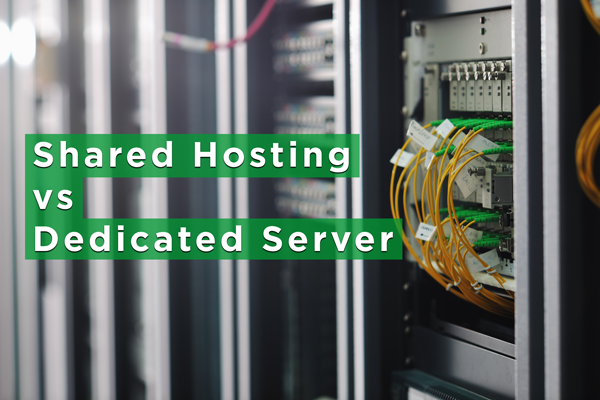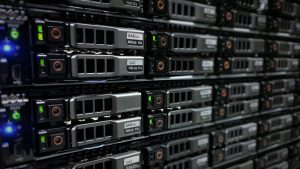Archive for the ‘dedicated server’ tag
4 Benefits of Web Hosting on a Dedicated Server no comments
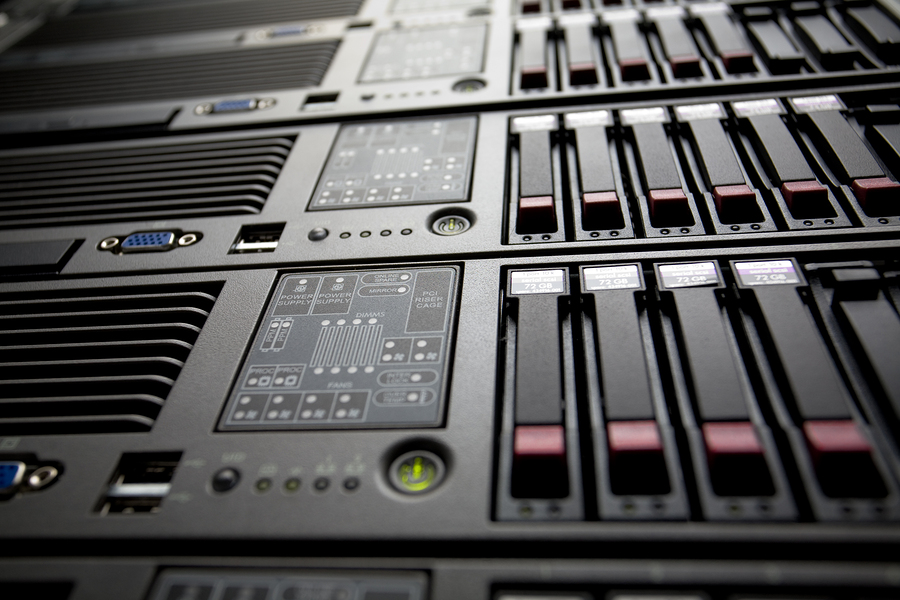
Both large and small businesses are faced with a wide variety of choices and options when it comes to finding a web hosting solution for their website, company email, and data. One option is shared hosting, in which a single server’s resources are shared by a number of different websites and users.
However, if you’re looking for more power, control, and flexibility, the solution for you may be a dedicated server. With a dedicated server, you and your business have exclusive access and use of that server’s resources. You also have the flexibility of customizing the server’s CPU, RAM, and disk space based on the needs of your website and business.
Let’s take a look at 4 specific advantages of choosing a dedicated server:
1. No Shared Resources
When using a dedicated server, every bit of power, storage, and bandwidth is exclusive to you and no one else. Not only will this give your business more room to work with and expand, it will also prevent issues with your site caused by other websites. For example, if you’re site is hosted on a shared server where there is another website that is being attacked or hogging up resources, this can affect the performance of your company’s site.
2. Flexibility & Customization
A dedicated server allows your business to customize the hardware and software based on your company’s unique needs. Things like CPU, Memory, Hard Drive, even the speed of the server’s network port, can all be customized and upgraded on dedicated servers. With shared hosting, you are limited to the software already installed on the server, and sometimes it may lack a requirement or feature your business needs. But with a dedicated server, you have full flexibility over which software the server runs, even down to the Operating System.
3. Administrative / Root Access
Another downside of shared hosting is the lack of Administrative or root access to the server. This limitation affects what software you can install as well as the settings and options that you can configure on the server. This can greatly impact the potential of what you are able to do with your website. Another advantage of administrative/root access is the ability to better monitor and troubleshoot your website, with full access to the server’s logs.
4. Dedicated IP Address
Each dedicated server comes with its own dedicated IP address. With shared hosting, your site may be sharing an IP address with multiple websites. If your website happens to share an IP with a site that spams or contains malware, this can cause multiple problems. Your website can end up getting blocked, your email rejected as spam, even your search results can be affected. Another thing to consider is whether or not you’ll be running an e-commerce or selling things on your site. If so, you will need to have an SSL for your site, which in turn requires a unique dedicated IP.
TurnKey Dedicated Servers
Now if you’re worried that you’re not tech savvy enough to run your own dedicated server, consider the option of going with a Managed Dedicated Server solution, which will provide many additional benefits on top of what’s listed above. Also if cost is a concern, check out TurnKey Internet’s ‘Best Value’ Dedicated Servers. There are countless other advantages to using a dedicated server, however the 4 above are some of the most notable. So before you decide to host your website on a shared server, consider the added flexibility, reliability, and performance that only a dedicated server can provide.
Follow Us :Share :
TurnKey Internet Launches New Dedicated Server and Colocation Management Tools no comments
LATHAM, NEW YORK (October 22, 2019) – Leading Data Center and Cloud Hosting Solutions provider TurnKey Internet announced today that they have launched and added EasyDCIM – the complete solution for Data Center and Colocation Management – to their extensive list of hosting features. The integration is a free upgrade for all of TurnKey’s dedicated server and colocation clients.
By revolutionizing and streamlining the entire server provisioning process together with providing complete management tools, EasyDCIM closes the gap between cloud and dedicated servers. It offers TurnKey’s clients automated Operating System installations, network graphs, improved Remote Reboots, as well as Direct Console Access.
Common operating systems like CentOS, Ubuntu, and Windows Server editions, as well as rescue mode options and recovery tools will be available to TurnKey’s clients at the click of a button. Dedicated Servers will now have historical network graphs, so clients can keep an eye on their bandwidth usage directly in their account’s Client Area.
Improved remote reboot functionality for immediate power cycling of any downed or unresponsive servers, has also been integrated automatically. Clients with servers featuring iDRAC or IPMI, will have direct access to these remote management tools from inside their Client Area, removing the need to remember separate IP addresses for access.
“We pride ourselves on providing our customers with the best available data center tools and technology,” said Adam Wills, President and CEO of TurnKey Internet. “We hope our customers enjoy using these new features as much as our team enjoyed implementing them.”
For more information about TurnKey Internet, or to speak with a Cloud Hosting Solutions expert, visit www.turnkeyinternet.net
About TurnKey Internet
Founded in 1999, TurnKey Internet, Inc. is a full-service Cloud Hosting Solutions provider with data centers in New York and California specializing in Infrastructure as a Service (IaaS) to clients in more than 150 countries. Services offered in both East Coast and West Coast, USA – include Public Cloud, Private Cloud, Dedicated & Bare Metal Servers, Backup & Disaster Recovery, Online Storage, Web Hosting, Managed Hosting, Hybrid Solutions and Enterprise Colocation. Headquartered in New York’s Tech Valley Region, TurnKey Internet’s Flagship company owned data center is SSAE 18 SOC 1 & SOC 2 certified, as well as HIPAA compliant. The facility is powered exclusively by on-site solar and hydroelectric sources to provide a 100% renewable energy footprint and in 2013 was designated the 39th ENERGY STAR® certified data center in the United States. For more information, please call (518) 618-0999 or visit www.turnkeyinternet.net
Follow Us :Share :
Effective Security Measures For Your Server no comments
If you run a server, especially for your business or organization, security should be a top priority. Whether the server exists to host files for a website or is networking computers for an office, it needs to be protected from malicious software, exploits and hackers. Failing to secure a server can lead to lost or corrupted data, damage to devices connected to the network and unauthorized individuals getting access to sensitive data. Below are various security measures that you can employ on your server that are extremely effective.
Review & Modify Default Settings
Programs running on your server, such as control panels (cPanel, Plesk), CMS (WordPress, Joomla, etc.) and even the operating system, contain various default settings that need to be reviewed and if necessary modified. They include everything from preset usernames and passwords for admin access to default connection ports. Anything that is left as set up by the software manufacturer may be used as a way to gain easier access to a system. Even leaving the URL for admin access to a server or programs on the server can make it easier for hackers to get in. There are hacking tools that specifically scan websites and servers for default URLs and folders, so changing default login locations is important. On this same basis, it’s a good idea to make sure that directories are protected so that people cannot see their contents.
Active Monitoring
A critical requirement to properly managing a server is knowing what is happening with it at all times. Even the best security software cannot prevent all intrusions, and hackers are constantly figuring out new ways to exploit and circumvent security systems. Therefore, it’s important that activity on a server is always being monitored. Things that normally indicate a problem include incredibly high data transfer or processing power use as well as multiple failed login attempts. Brute force hacking involves trying to login to a system over and over again with different login and password combinations. In addition to draining system resources, it can also eventually allow a hacker to find a combination that lets them into your system. Real-time monitoring can help detect these issues and alert the appropriate people, and it can also shut down brute force login attempts.
Passwords & Permissions
Another important server security measure is to ensure that all passwords, especially the root and/or Admin passwords, are complex and that people are only given access to areas that they need to do their job. Aside from malice, giving an intern administrative access to databases could lead to major problems through simple error. It’s also recommended to change your passwords on a regular basis, even if they are robust.
There are a number of ways to tackle the issue of making sure passwords are complex enough, including using computer generated passwords or using passphrases. Computer generated passwords normally require certain characters, length and require a combination of upper and lower case letters; passphrases are combinations of words, and they tend to be easier to remember and more secure than passwords. There should also be a set time that passwords expire, which will require users on the network to change them on a regular basis.
Along with ensuring that people are only given access to parts of a server that they need to have, it’s important that permissions are updated when people leave a job or move to a different part of the company. This can be done with proper database management and doing occasional audits to ensure that access levels are appropriate.
Updates
One way that hackers get into many servers is by going through weak points that developers did not notice when creating an application or an operating system. This is why both computers and mobile devices need regular updates. Along with offering new options, updates close off back doors and holes in the security of software. Therefore, it’s important that all software hosted on your server is kept up to date. For web hosting servers, that means content management systems (CMS) such as WordPress, and the plug-ins the CMS uses must be kept current. Many operating systems and software applications can be set up to update automatically, but if you’re not comfortable with that, it’s important that you have some way of being notified when important changes are available.
For those of you who feel there’s just not enough time in your day to employ these server security measures, or if you just prefer someone else does it for you, at TurnKey Internet we got your back. We offer Fully Managed solutions, such as our Best cPanel Dedicated Server, that include Server Hardening. We’ll take care of securing and protecting your server so you can focus on running your business. For more information, visit https://turnkeyinternet.net/managed/
Follow Us :
Share :
cPanel Security 101 no comments
cPanel provides convenient server access and a user-friendly interface for managing your website. However, like any online environment, it has several potential security problems. As a responsible webmaster, it’s up to you to recognize these vulnerabilities and take steps to close any loopholes hackers could use to access your server or site. Take charge and manage critical access points with these eight cPanel security tips.
Create Strong Passwords
From the main cPanel portal to individual email accounts, every login point needs a strong, secure password. Guidelines for length vary, and some sources suggest as many as 14 characters to ensure protection. Longer passwords allow for more complex combinations of numbers, symbols and upper- and lower-case letters. Use a different password for accessing cPanel, FTP, email management and other secure areas, making sure none of them contain obvious information such as phone numbers or birthdays.
If you have trouble coming up with enough different combinations, try an online password generator. A password manager is useful for keeping track of your login information for all of cPanel so that you don’t have to look up each password every time you sign on.
Install a Firewall
A firewall lets you access cPanel while keeping unauthorized users out. Think of it as a border patrol for your server, constantly checking to ensure only the right people get through. ConfigServer Security and Firewall (CSF) is a popular firewall application for cPanel designed to serve this purpose. It scans the system on a regular basis and checks authentication logs to keep your site safe from hackers at all times. CSF also provides feedback on how to make your server more secure overall. Since more is better when it comes to security, check these reports and make any necessary changes as soon as possible.
Be a “Brute”
Although a firewall can prevent hackers from gaining access to your site, it won’t stop them from trying to log in. Brute force protection is a feature of cPanel used to block IP addresses after multiple failed login attempts. Found in the Security Center section, this option is easy to enable and customize. Use the IP Deny Manager to manually input IP addresses known to be malicious so that they’re never allowed to log on.
You can customize the brute force option, known as cPHulk, by setting how many minutes the tool monitors for repeated logins, the maximum number of failed logins allowed and how long each IP ban stays in place.
Stop Anonymous FTP Access
With anonymous FTP, anyone can log in to your site via FTP with only a username and a generic password. This may be useful for sharing files with a large number of people, but it’s like an open door to hackers. When all users can gain access to your server through such a simple process, every file becomes subject to tampering.
Set your FTP preferences to allow only for SSL logins, and require a password to be entered each time. The setting can be found under FTP Server Configuration in cPanel.
Make SSH Secure
Secure shell (SSH) is a convenient way to access your site from a remote location. Unfortunately, it can also provide an entry point for hackers. Information sent through SSH is authenticated and encrypted to prevent outside manipulation, so malicious users can’t touch it unless they break through your security measures.
The default port of 22 is the most common setting for SSH access. Changing it to another available port and implementing a security key for logins minimizes the risk of being hacked. Switch the settings from SSH1 to SSH2 for additional protection.
Protect Against Hotlinking
Hotlinking is the practice of linking an image or file on one server directly to a page on a remote website. Some people do this in ignorance, assuming the easiest way to embed an image is to use the original link, but it’s generally considered a bad practice. Hotlinked files use bandwidth from your site every time someone accesses them, and this has the potential to overload your servers if too many requests are made.
The Security section of cPanel offers hotlinking protection. Simply enable the setting to prevent third parties from linking to your files. Add an extra layer of security by specifying certain file extensions you don’t want to be hotlinked.
Tweak Your Settings
While you’re taking care of the larger security issues in cPanel, make sure you don’t neglect less common settings. Open Tweak Settings under Server Configuration to access an entire list of other possible security measures. With this checklist, you can:
• Help prevent the sending of unauthorized emails, including spam
• Shut down potential email attacks
• Block malicious referrals or redirects from hijacking your site
• Stop the generation of proxy domains
• Require IP validation for cookies
• Set up an additional security token for cPanel access
Enabling these supplemental security settings helps address any remaining vulnerabilities and keep hackers at bay.
Stay Updated
Your web host should have automatic cPanel updates in place. If not, go to Update Preferences in the Server Configuration area and enable the setting yourself. Old versions of software, including cPanel, may contain security vulnerabilities hackers can use to access your server. Automatic updates ensure you’re always running the latest version of cPanel with any associated security patches and bug fixes. Go back and check once and a while to confirm updates are running as they should. If not, update manually and contact your web host to find out why the setting isn’t working.
A ‘TurnKey’ Solution
Security is one area of website management where you should never cut corners to save time or effort. The smartest thing you can do is implement proper security measures for cPanel as soon as your hosting account is set up.
However, one way you can save time and effort is with TurnKey Internet’s all-inclusive and fully managed cPanel solution. We monitor and take care of your server so you can focus on running your business – leave the infrastructure, software updates, security, backups, and uptime to us.
The Best Value cPanel Web Hosting Dedicated Server from TurnKey Internet provides the perfect combination of security, performance, features and cost for the ultimate cPanel/WHM Web Hosting Server. This package offers a complete all-inclusive fully managed service including software licensing for cPanel/WHM, enterprise-grade server backups, and the premium high capacity DEDICATED server with RAID and SSD ultra fast disks. For more information, click here.
Follow Us :
Share :
TurnKey Internet, Inc. Launches The Best Value cPanel Web Hosting Dedicated Server no comments
LATHAM, NEW YORK (October 16th, 2018) – Leading Data Center and Cloud Hosting Solutions provider TurnKey Internet, Inc. has announced today the launch of a new infrastructure as a service product line that features cPanel web hosting control panel combined with a fully managed enterprise-grade dedicated server that bundles security and performance to deliver a seemless ‘TurnKey’ solution for high performance web hosting.
The Best Value cPanel Web Hosting Dedicated Server from TurnKey Internet provides the perfect combination of security, performance, features and cost for the ultimate Web Hosting Server. The enterprise-grade high-capacity dedicated server with RAID redundant SSD ultra-fast disks combined with full managed backups. The Servers have all-inclusive full management with custom firewall protection, server hardening, custom PHP, Apache and MySQL optimizations, along with cPanel/WHM software licensing.
cPanel web hosting automation software is pre-installed and fully licensed on each dedicated server on this new product line and includes many powerful features such as email, web hosting, web stats, with the latest security patches and features. cPanel is the industry-leading web hosting automation control panel that offers a graphical interface and easy to use automation tools designed to simplify the process of hosting websites. Utilizing cPanel with this dedicated server package provides clients with blazing fast website performance and the ultimate layer of security to host their website domain names and applications such as WordPress, Joomla, Drupal, and much more.
The dedicated servers are housed in TurnKey’s company owned SSAE-18 certified data center located in New York. They are directly connected to TurnKey’s redundant BGP4 powered internet backbone via a dedicated port featuring un-metered GigE (1000 Mbit, Gigabit) bandwidth connectivity. Each fully managed server is securely configured to protect against unauthorized connections and will be monitored 24/7 by TurnKey’s award-winning security and support team.
“This package is perfect for any sized business to host their own website, manage a portfolio of websites or even resell websites for others as a Reseller or Marketing Agency,” said Adam Wills, CEO of TurnKey Internet. He continued, “We monitor and take care of the server so clients can focus on running their business – and simply leave the infrastructure, software updates, security, backups, and 100% uptime to us.”
For more information about TurnKey Internet’s Best Value cPanel Web Hosting Dedicated Server or to speak with a Cloud Hosting Solutions expert, visit https://turnkeyinternet.net/
About Turnkey Internet
Founded in 1999, TurnKey Internet, Inc. is a full-service Cloud Hosting Solutions provider with Data Centers in New York and California specializing in Infrastructure as a Service (IaaS) to clients in more than 150 countries. Services offered in both East Coast and West Coast, USA – include Public Cloud, Private Cloud, Dedicated & Bare Metal Servers, Backup & Disaster Recovery, Online Storage, Web Hosting, Managed Hosting, Hybrid Solutions and Enterprise Colocation. Headquartered in New York’s Tech Valley Region, TurnKey Internet’s Flagship company owned data center is SSAE-18 SOC 1 & SOC 2 certified, as well as HIPAA compliant mappings. The facility is powered exclusively by on-site Solar and Hydroelectric sources to provide a 100% renewable energy footprint and is the 39th ENERGY STAR® Certified Data Center in the United States. For more information, please call (518) 618-0999 or visit www.turnkeyinternet.net/media
Follow Us :
Share :
How Website Speed Affects Your Business no comments
If you’ve ever waited for a slow website to load, you know how frustrating it is. It only takes a few seconds – if that – for you to start getting impatient and considering going to another site.
Visitors to your site feel the exact same way. People have grown increasingly accustomed to instant results, and most web users expect web pages to show up on their screen right after clicking or tapping. A slow website can directly, and negatively, impact your sales and ability to draw in new clients.
However, it’s not just sales that take a hit when your website is crawling. Slow load times can result in reduced search engine rankings and depressed conversion rates. Additionally, a slow website is often the sign of a design problem, which may mean that you’re using more bandwidth to do less.
The Five Second Rule
According to a recent study, one-third of online shoppers will leave your site if it takes more than five seconds to load. Along with the fact that five seconds is a very short amount of time to work with, the study found that people are getting more impatient; a previous study showed that you had six seconds before people left.
If that weren’t bad enough, a study done by Google that specifically looked at mobile users found that these individuals are even more impatient. More than half of those involved in the study will leave a mobile website if it doesn’t load in three seconds.
What this means is that your website design needs to focus on speed instead of design elements. To ensure that people will go to your website – and stay – your site needs to be fast and streamlined.
Load Time Affects Sales
If you’ve got your website loading under five seconds, you may get visitors to stick around, but it won’t necessarily net you a sale. The study that found many people will leave after five seconds also determined that a 2.4 second load time led to the highest conversion rates. This is backed up by data collected by Kissmetrics, which showed that a one second delay in website response time can lead to a seven percent conversion rate drop.
The collected data also showed that people who made purchases from a site but were unhappy with the site’s performance were less likely to buy from the site again. In other words, the bare minimum to get someone to stay may be five seconds, but if you want to make a sale, and keep making sales, your site may need to load even faster.
Google Is Impatient Too
Load times don’t just affect whether or not a potential customer stays on your website. They may also play a part in determining if someone ever arrives at your site. This is because Google looks at user experience when calculating search engine rankings.
There are a number of factors that go into user experience, but load time is a significant one. Search engine ranking is very competitive since it determines where your site shows up in search results and if it shows up on the first page. With less than 80 percent of people clicking to the second page of search results, it’s essential that you’re doing everything you can to be on page one.
Google offers a website to check your site’s performance, and according to the search engine, a score of 85 or higher out of 100 means that your site is doing well. Anything below that likely spells trouble when it comes to your search engine rankings.
It’s also important to note that Google has started to give websites that are mobile friendly higher rankings when people do a search from a mobile device. If you have a desktop site that loads quickly but don’t create an equivalent mobile site, you could see a drop in your mobile search rankings.
Slow Load Times Could Mean Back End Problems
There are a variety of reasons that your website may be running slowly or simply not loading as quickly as visitors would like. Many common reasons relate to design, such as running too many scripts or filling up the page with large media files.
These problems can be resolved easily by streamlining a website and cutting down on files and scripts that bog the loading process down. Doing this may help to improve the performance of your web server as well. If the media files on your site that are taking up enormous amounts of bandwidth are compressed or if you reduce the number that load on your site, you could see a lot of resources freed up.
It May Be Time To Upgrade
However, slow load times, especially if you have optimized your website, may indicate that there’s a larger problem with your server or the network you’re running on. If you are hosting on a Shared Server, it could be that you need more power and system resources. To resolve this, it is recommended that you upgrade to a VPS/Cloud Server or Dedicated Server solution. If your business is utilizing a Colocation solution but still experiencing bandwidth and network issues, it may be time to change your Data Center and/or Cloud provider.
While attractive and innovative website designs may be appealing, if you’re in the business of selling, your focus should be on a website that loads quickly and is easy to navigate. Shaving just a second off of the load time of your site and pages within it could mean a dramatic difference in conversion rates and sales, and it could also improve your search engine rankings.
Follow Us :
Share :
RAID: The Upgrade Your Server Deserves no comments
A Redundant Array of Inexpensive Disks (RAID) is a system that utilizes multiple hard drives simultaneously to act as a single storage volume. Using a controller that manages the operation of the hard drives, you can configure a RAID array to do the following:
- Stripe data across multiple drives, reading and writing data across all drives simultaneously for double the performance — or more — when reading or writing large blocks of data
- Mirror data across multiple drives so that each drive in the array contains an exact copy of the same data
- Create Parity blocks on each drive in the array, making it possible to recover the lost information if a drive fails — and to keep the array running while rebuilding the failed drive
RAID has several implementations — or “levels” — that utilize striping, mirroring, parity or a combination of the three. We’ll explain those more fully later in the article, but for now there’s one thing you need to know: If you have a home or business server, you need RAID. RAID is the one solution that can make your server faster, do a better job of protecting your data and continue operating while you rebuild data after disk failure.
Although an exhaustive list of all RAID levels is outside the scope of this article, this brief list should help to explain the features and benefits of RAID in greater detail:
RAID 0
A RAID 0 array requires at least two hard drives. In RAID 0, the controller splits all data equally across all hard drives. Each drive works simultaneously during read and write operations, increasing the speed of the volume to far greater than that of a single hard drive.
Strengths and Weaknesses: A RAID 0 array excels in increasing a server’s storage performance. However, all data in a RAID 0 array is lost if one drive fails. You can add additional drives to a RAID 0 array to increase its performance further, but adding more drives further increases the risk of failure.
RAID 1
In a RAID 1 array, every hard drive contains the same data and the controller writes to all drives simultaneously. A RAID 1 array provides excellent data redundancy because all of the data survives unless every drive in the array fails.
Strengths and Weaknesses: In addition to data redundancy, RAID 1 can slightly increase a server’s read performance. When the controller requests data, the drive that can access the data most quickly will retrieve it. However, RAID 1 provides no increase in storage capacity past that of the smallest hard drive in the array because each drive contains the same data. In addition, the slowest hard drive determines the write speed of the entire array.
RAID 5
A RAID 5 array stripes the data across multiple drives like RAID 0. However, every hard drive also carries parity data for each block written. Using the parity data, the controller can rebuild the entire array if one drive fails — and the array can continue working during the rebuild process.
Strengths and Weaknesses: The greatest strength of RAID 5 is that it offers increased reliability without sacrificing a great deal of storage capacity. Unlike RAID 1, the total capacity of a RAID 5 array increases each time you add a hard drive. However, parity data does take up some space. A RAID 5 array with four 1 TB hard drives will have a total capacity of about 3 TB.
RAID 5 offers better read performance than a single drive because the striping allows multiple drives to read simultaneously. However, the write performance of RAID 5 is relatively poor because of the extra time required to write parity data.
RAID 6
RAID 6 is similar to RAID 5 in design, but it devotes an amount of storage equal to that of two hard drives — rather than one — to parity so it can tolerate the failure of two drives without losing data.
Strengths and Weaknesses: A RAID 5 array can tolerate the loss of any one drive. However, hard drive manufacturers state that about once every 12.5 TB, a hard drive will encounter an unrecoverable read error. If you have a RAID 5 array with four 4 TB drives and one drive fails, the remaining capacity of the array is about 12 TB. If one of the remaining three drives experiences a read error when rebuilding the array, the rebuild operation will fail. If you use more hard drives — or larger hard drives — the chance of failure is greater. So, RAID 6 is far more reliable than RAID 5 for very large RAID arrays. However, because RAID 6 doubles the amount of parity data, write operations are slower.
RAID 10
RAID 10, or RAID 1+0, is essentially the combination of RAID 1 and RAID 0. It combines disk striping and disk mirroring to provide redundancy and performance. Due to it’s incredible performance benefits, RAID 10 is one of the most ideal solutions, especially for intense applications and databases.
Strengths and Weaknesses: The greatest strength of RAID 10 is that it offers maximum performance while also maintaining redundancy. The only disadvantages of RAID 10 are that it requires a minimum of four disks and only 50% of the disk space is usable due to mirroring.
RAID has become a vital necessity for any business looking for safety and performance when it comes to their website and/or critical company data. If your business is currently running on a server without RAID, you risk not only data loss, but also the added performance that can separate you from your competitors. Now is the time to upgrade your business to a RAID solution.
At TurnKey Internet, RAID upgrades are available on all of our Dedicated Servers. Best of all, our latest Best Value Dedicated Server already includes RAID 10, making your upgrade even easier! Start enjoying the added performance and safety of RAID today.
Follow Us :
Share :
Shared Hosting vs Dedicated Server no comments
When you are just getting started, a shared web hosting plan is typically enough to help you meet your goals. It gives you a platform to collect leads, showcase your company and sell your products and services. The problem with shared hosting, though, is that it comes with limited performance and limited room for growth. Although it’s enough while your business is still small, you might want to think about upgrading as your business starts to grow. Many people have a hard time deciding when to make the switch, and if you can relate to this problem, then the following information will get you started in the right direction. You will learn about the benefits of using a dedicated server, but you will also get a clear picture of when to take action.
With most shared hosting plans, your performance can be impacted by the way that other people on the server use their resources. If someone else’s website is getting a lot of traffic or being attacked, then your website might slow down or even go offline for a while. If you depend on your site to generate sales, then this downtime is unacceptable. When your customers want to make a purchase, they are not always going to wait for your content to come online again. So any performance issues that you experience can hurt your profitability. A dedicated server will help you avoid that problem by providing you with exclusive resources. A dedicated server also enables your business to customize and configure the performance resources and software based on your company’s unique needs. Things like CPUs, memory, and storage space, can all be customized and upgraded on a dedicated server. With shared hosting, you are limited to the software already installed on the server, and sometimes it may lack a requirement or feature your business needs. But with a dedicated server, you have full flexibility over which software your server runs, even down to the Operating System (Windows, Linux, etc).
Another downside of shared hosting is the lack of Administrative or root access to the server. This limitation affects what software you can install as well as the settings and options that you can configure on the server. This can greatly impact the potential of what you are able to do with your website. However with a dedicated server, you do have full root or admin access, giving you the ability to better monitor and troubleshoot your website, with full access to your virtual server’s logs. With a dedicated server, you have exclusive access and can dictate who shares that access. This allows you to better secure the contents on your server and alleviates the concerns of sharing a server with malicious or careless users. Also because you have full control over the server, you can better enhance and customize its security based on your unique needs.
If you have decided that you need to upgrade, then consider it a good thing. Needing more resources means that your business is growing and that you are attracting plenty of new customers. Having a dedicated server will help you accommodate even more web traffic, and you will not need to worry about losing sales or customers due to downtime. The speed and performance of a dedicated server will also help you maintain a professional image, which will enhance and preserve your reputation. Some business owners procrastinate when they need to upgrade their website, but doing so hurts them more than they likely suspect. Ensuring that your web hosting solution is capable of meeting your needs is a vital factor when it comes to getting the most from your business, and you can get started right away.
Follow Us :
Share :
What is a Dedicated Server? no comments
A dedicated server (also known as a bare metal server) offers the ultimate combination of performance, value and security for your web hosting needs. A dedicated server provides you with exclusive access to all the physical hardware in the server (CPU, Ram, Disk, Network Port, and the physical chassis of the server). Nothing on the server is shared with any other clients in any fashion.
For most clients with a new website or business, a Shared Hosting solution is enough to get off the ground. But, for many there comes a point when shared hosting just isn’t enough. The most obvious sign that it’s time for an upgrade is when your website has started regularly requiring more bandwidth or resources than your current plan provides. If your business increases in popularity, thus suddenly sending more visitors to your website, it could temporarily go offline. However, upgrading your shared hosting to a dedicated server can prevent this.
Regardless of the content of your website, if you’re worried about stability, a dedicated server is always the safest bet. Below you will find a summary of all the benefits a dedicated server provides.
Performance
Server and network response times in a shared hosting environment depend highly on the activity of other users and websites with whom you share space and resources. With a dedicated server you have significantly faster response and page load times because all the systems resources (such as CPU, disk, RAM and network bandwidth) are controlled and utilized solely by the applications on your server.
Reliability
With a dedicated server, you have unlimited access to the operating system, server resources and software applications. This gives you a reliable way to manage the needs of your website and users: it’s all there when you need it.
Security
Dedicated servers provide better security than any other form of hosting since you are the only one with the root “administrative” access to your resources and can configure customized security policies, such as firewall protection, user-level permissions and even restrict the types of applications that run on the server. With shared hosting, the users you share space with could jeopardize the security of your website and data.
Customization
Dedicated servers offer unlimited customization and flexibility to meet your hosting application needs. You have access to fine tune and optimize all aspects of the server such as custom versions of Apache, PHP, MySQL, or custom database configurations to suit your application needs, providing substantial performance gains over any other form of hosting. You can install, remove, or modify any applications you wish.
Dedicated servers are the best solution for those that are serious about their web site and want the assurance that hardware, software and resources are dedicated exclusively to them. If you are considering hosting numerous domains, a high traffic site, an e-commerce site, have sensitive data contained in your site or simply want more speed, power and control, it’s time to upgrade to a dedicated server.
Follow Us :
Share :
RAID: Why Your Server, Website and Business Needs It no comments
As hard drives have grown in capacity, backing entire systems up to non-volatile media such as tape has grown increasingly impractical. The amount of tape required to maintain a seven-day rotating backup of a modest server with only a few hard drives, for example, is financially unfeasible for most businesses.
So, what do most businesses do? They compromise. They back up all of their data to a single set of tapes — and if you encounter a failure with your one set of tapes during the data recovery process, you’ve got a catastrophe on your hands. It’s better than not backing data up at all, but only marginally. Which brings us to RAID.
RAID: A Better Solution
A Redundant Array of Inexpensive Disks (RAID) is a system that utilizes multiple hard drives simultaneously to act as a single storage volume. Using a controller that manages the operation of the hard drives, you can configure a RAID array to do the following:
- Stripe data across multiple drives, reading and writing data across all drives simultaneously for double the performance — or more — when reading or writing large blocks of data
- Mirror data across multiple drives so that each drive in the array contains an exact copy of the same data
- Create Parity blocks on each drive in the array, making it possible to recover the lost information if a drive fails — and to keep the array running while rebuilding the failed drive
RAID has several implementations — or “levels” — that utilize striping, mirroring, parity or a combination of the three. We’ll explain those more fully later in the article, but for now there’s one thing you need to know: If you have a home or business server, you need RAID. RAID is the one solution that can make your server faster, do a better job of protecting your data and continue operating while you rebuild data after disk failure.
RAID Levels
Although an exhaustive list of all RAID levels is outside the scope of this article, this brief list should help to explain the features and benefits of RAID in greater detail.
RAID 0 (Striping)
A RAID 0 array requires at least two hard drives. In RAID 0, the controller splits all data equally across all hard drives. Each drive works simultaneously during read and write operations, increasing the speed of the volume to far greater than that of a single hard drive.
Strengths and Weaknesses: A RAID 0 array excels in increasing a server’s storage performance. However, all data in a RAID 0 array is lost if one drive fails. You can add additional drives to a RAID 0 array to increase its performance further, but adding more drives further increases the risk of failure.
RAID 1 (Mirroring)
In a RAID 1 array, every hard drive contains the same data and the controller writes to all drives simultaneously. A RAID 1 array provides excellent data redundancy because all of the data survives unless every drive in the array fails.
Strengths and Weaknesses: In addition to data redundancy, RAID 1 can slightly increase a server’s read performance. When the controller requests data, the drive that can access the data most quickly will retrieve it. However, RAID 1 provides no increase in storage capacity past that of the smallest hard drive in the array because each drive contains the same data. In addition, the slowest hard drive determines the write speed of the entire array.
RAID 5 (Parity)
A RAID 5 array stripes the data across multiple drives like RAID 0. However, every hard drive also carries parity data for each block written. Using the parity data, the controller can rebuild the entire array if one drive fails — and the array can continue working during the rebuild process.
Strengths and Weaknesses: The greatest strength of RAID 5 is that it offers increased reliability without sacrificing a great deal of storage capacity. Unlike RAID 1, the total capacity of a RAID 5 array increases each time you add a hard drive. However, parity data does take up some space. A RAID 5 array with four 1 TB hard drives will have a total capacity of about 3 TB.
RAID 5 offers better read performance than a single drive because the striping allows multiple drives to read simultaneously. However, the write performance of RAID 5 is relatively poor because of the extra time required to write parity data.
RAID 6 (Additional Parity)
RAID 6 is similar to RAID 5 in design, but it devotes an amount of storage equal to that of two hard drives — rather than one — to parity so it can tolerate the failure of two drives without losing data.
Strengths and Weaknesses: A RAID 5 array can tolerate the loss of any one drive. However, hard drive manufacturers state that about once every 12.5 TB, a hard drive will encounter an unrecoverable read error. If you have a RAID 5 array with four 4 TB drives and one drive fails, the remaining capacity of the array is about 12 TB. If one of the remaining three drives experiences a read error when rebuilding the array, the rebuild operation will fail. If you use more hard drives — or larger hard drives — the chance of failure is greater. So, RAID 6 is far more reliable than RAID 5 for very large RAID arrays. However, because RAID 6 doubles the amount of parity data, write operations are slower.
RAID 10 (Mirroring + Striping)
RAID 10, or RAID 1+0, is essentially the combination of RAID 1 and RAID 0. It combines disk striping and disk mirroring to provide redundancy and performance. Due to it’s incredible performance benefits, RAID 10 is one of the most ideal solutions, especially for intense applications and databases.
Strengths and Weaknesses: The greatest strength of RAID 10 is that it offers maximum performance while also maintaining redundancy. The only disadvantages of RAID 10 are that it requires a minimum of four disks and only 50% of the disk space is usable due to mirroring.
RAID has become a vital necessity for any business looking for safety and performance when it comes to their website and/or critical company data. If your business is currently running on a server without RAID, you risk not only data loss, but also the added performance that can separate you from your competitors. Now is the time to upgrade your business to a RAID solution. At TurnKey Internet, RAID upgrades are available on all of our Dedicated Servers. Best of all, our latest Best Value Dedicated Server already includes RAID 10, making your upgrade even easier! Start enjoying the added performance and safety of RAID today.
Follow Us :Share :

